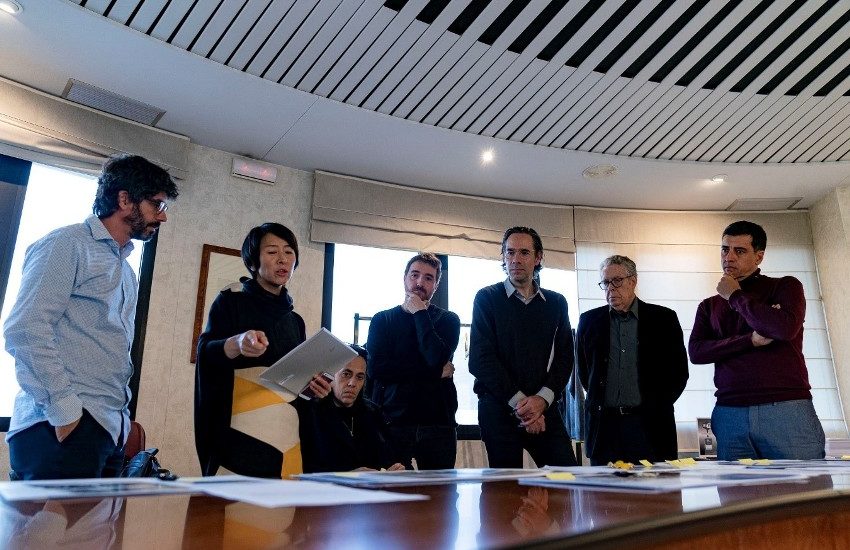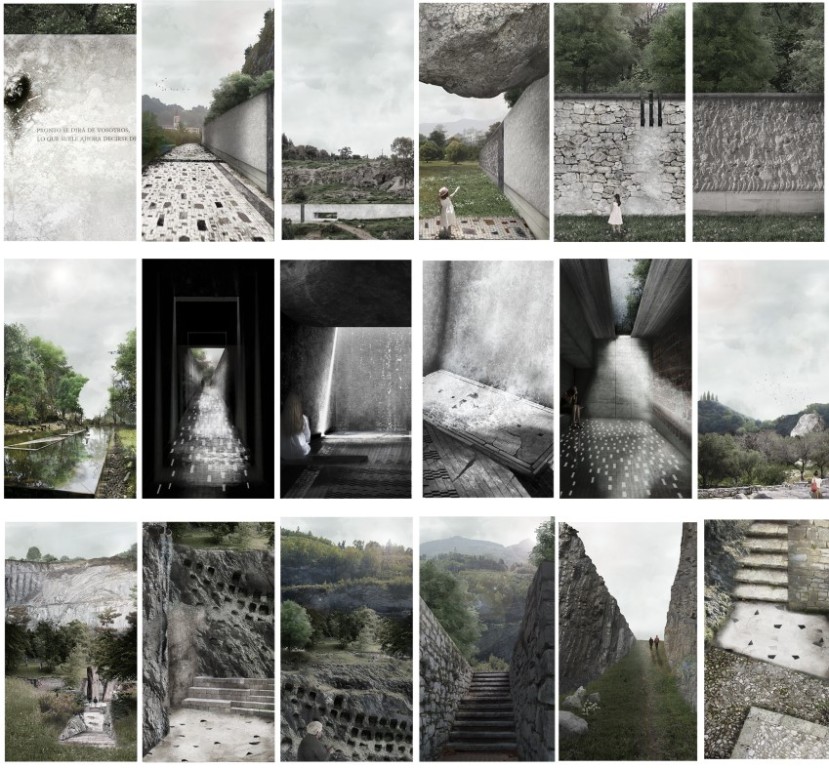Santa Creu & Sant Pau Hospital Research Centre in Barcelona by PICHarchitects 2BMFG was the winner in the architecture category. The winner in the interior design category was a project for the waiting areas of a bus station in Badajoz by José María Sánchez García. In the student category, the award went to “Memento Mori” by Óscar Cruz García from Madrid School of Architecture. The three categories have a total monetary prize worth €39,000.
On Wednesday November 20th, the jury of the 18th edition of the Tile of Spain Awards met at ASCER’s headquarters. Jacob van Rijs (from MVRDV); Inês Lobo (from Inês Lobo Arquitectura), David Lorente (H Arquitectes), Eugeni Bach (Anna & Eugeni Bach), Héctor Ruiz Velázquez (Ruiz Velázquez Architecture & Design Team), Tomoko Sakamoto (Spread Editores), and Ramón Monfort (CTAC) decided to award the first prize in the architecture category to Santa Creu & Sant Pau Hospital Research Centre (Barcelona) by PICHarchitects Pich-Aguilera and 2BMFG Arquitectes whose permeable ceramic envelope seeks to blend in with the architecture in general. The first prize in the interior design category went to a project for the waiting areas of a bus station (Badajoz) by José María Sánchez García, where ceramic tiles alone succeed in meeting all the expected requirements of coverings used in public spaces. The jury decided to award two special mentions in both categories.
In the final degree project category, the jury awarded a first prize and two special mentions. The first prize went to “Memento Mori. The Presence of an Absence” by Óscar Cruz García from Madrid School of Architecture.
The awards have a prize of €17,000 in the architecture and interior design categories and €5,000 in the final degree project category. The Tile of Spain Awards are sponsored by Endesa, Weber-Saint Gobain, Valencia Port Authority, and CESCE.
Architecture
Prize: Santa Creu & Sant Pau Hospital Research Centre in Barcelona by PICHarchitects_Pich-Aguilera & 2BMFG Arquitectes.
The jury highlighted the innovative use of a ceramic material and the context in which it was used, with its capacity to blend into part of the surroundings. The façade is a permeable ceramic envelope that guarantees visual links between indoors and out, with a chameleonic outer appearance.
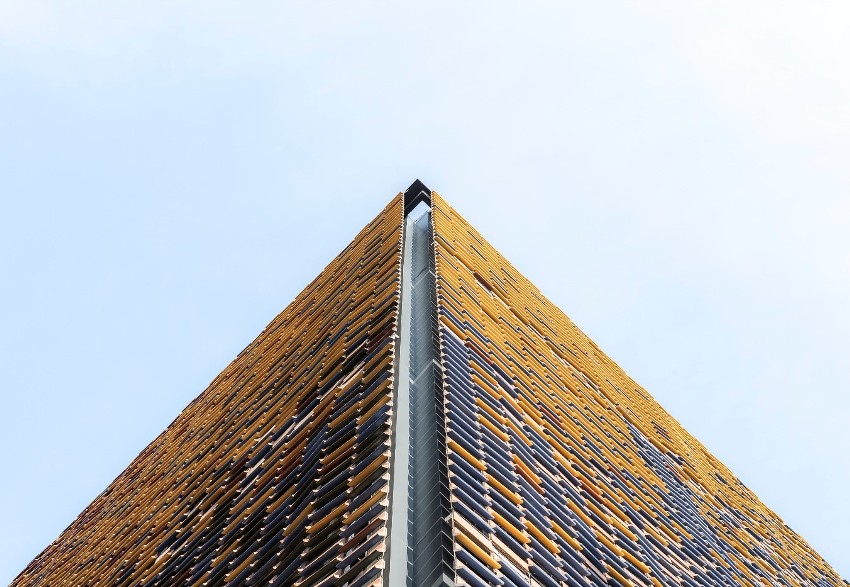
Photo by Aldo Amoretti.
Special mention: Courtyard of the Brave & the New Parents’ Room by Elisa Valero.
The jury commended the surprising application that was given to a widespread common ceramic material by playing around with it and retransforming a small octagonal section of building. Local references, through a use of specific materials and shapes, are the keys to a project designed with ingenuity and economy of means.

Photo by Fernando Alda.
Special mention: Edificio Tívoli by Martín Lejárraga Architects’ Studio.
The building’s refurbishment to house 22 apartments, commercial premises and parking areas.
The jury praised the contrasts that were used in the building’s refurbishment, taking advantage of ceramic materials to reinforce the sense of interplay between the existing building and the new one. Colour and geometry act as a linking thread, signalling the refurbishment work done to the interiors and exteriors of the building.
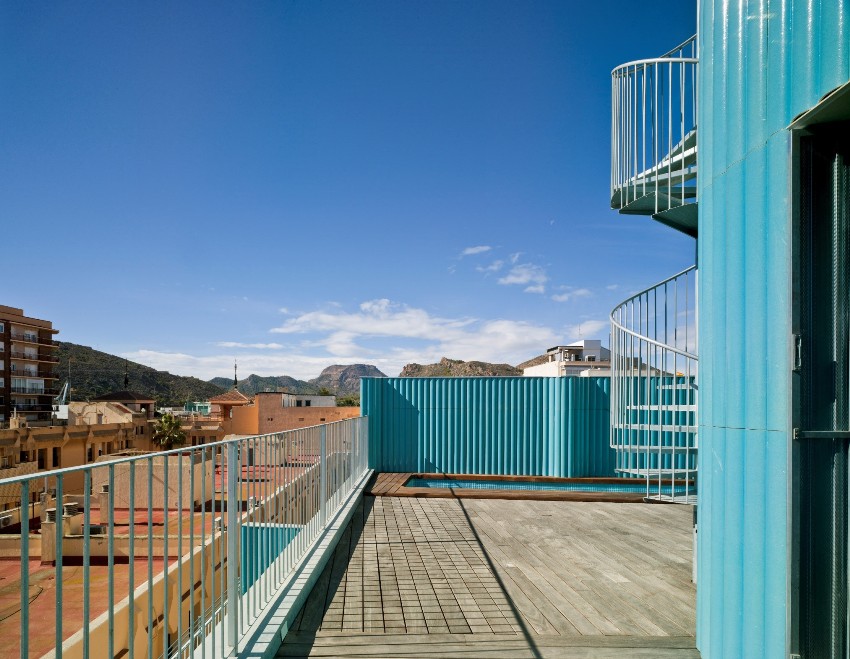
Photo by David Frutos.
Interior Design
Winner: A project for the waiting areas of a bus station (Badajoz) by José María Sánchez García.
The jury applauded the elegance with which this project was brought to fruition through the design of a ceramic material. The keys to this project are geometrical shapes, attention to detail, construction and space, taken into account on both the smallest of scales and in terms of user experiences.

Photo by RN Fotógrafos.
Special mention: “Vallirana 47” by Vora Arquitectura.
The jury highlighted the way the project acted as a palimpsest, adding a further layer to a 20-year-old property and playing with the colour and material aspect of the different tiled floors. Interplay with geometrical shapes and the contrast with the new layout play a silent starring role in this delicate design project.
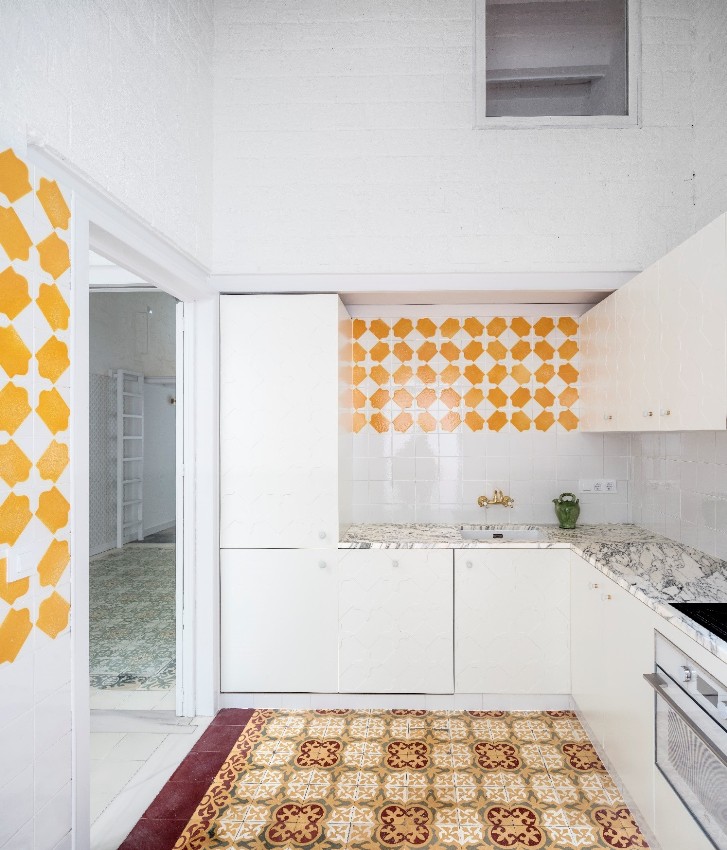
Photo by Adrià Goula.
Special mention: “Camper Paseo de Gràcia” by KKAA (Kengo Kuma / Javier Villar Ruiz).
The jury was struck by the versatility of a ceramic material used as a star feature in a store, with a dual function as a display for products with a strong decorative impact.
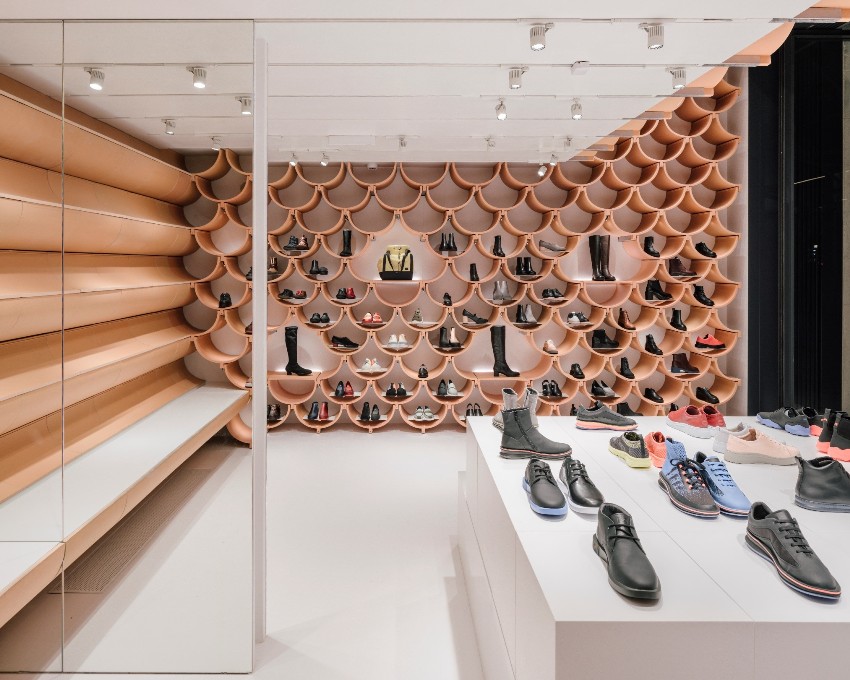
Photo by Imagen Subliminal (Miguel Guzmán/Rocío Romero)
Final degree project category.
In the category for architecture students, with a prize of €5,000, a first prize and two special mentions were awarded by the jury.
First prize: “Memento Mori. The Presence of an Absence” by Óscar Cruz García from Madrid School of Architecture (ETSAM).
The jury highlighted the maturity and sensitivity of a project that was thoroughly illustrated and deeply felt. Attention to detail is the leitmotif of a sequence of spaces where nature, materials and atmospherics are all combined.
Special mention: Dance school by Alexey Agarkov de la Moscow Architecture School (MARCH School)
Praise was given to the project’s capacity to generate atmospheres and spaces conspicuous for their beauty and amazing simplicity. Ceramic materials are used to contribute to the spaces’ architectural forms and to the quality of the light and materials.
Special mention: Barcelona Fabrica by Felipe Sancho Cervera from the ETSAB.
The jury admired how a simple ceramic material was used to create intermediate spaces of huge complexity and spatial value. By making tiny modifications to the material’s geometry, position, colour and direction, added environmental value is brought to outdoor, intermediate and indoor spaces.
